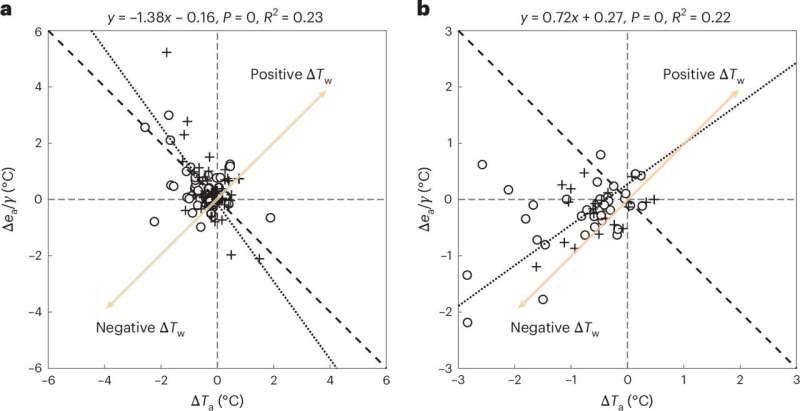
November 15, 2024 by Yale University
Collected at: https://phys.org/news/2024-11-humidity-diminishes-daytime-cooling-gains.html
Urban green spaces provide shade for city dwellers facing rising temperatures brought on by climate change, but how much relief from the heat island effect do they provide when humidity is factored in?
The temperature and humidity effect cancel each other out during daylight hours, but green spaces provide a net reduction in humid heat at night, according to a new study in Nature Cities, co-authored by Yale School of the Environment doctoral student Yichen Yang and Xuhui Lee, Sara Shallenberger Brown Professor of Climate Science.
“When it comes to urban heat resilience, humidity matters as much as temperature or shade provisions,” Lee said.
Using mobile smart sensors on bicycles to measure temperature and humidity across 114 green spaces in 15 cities worldwide, the research team examined their combined effects across wet and dry urban regions. Their measurements found that during the day, green spaces are indeed cooler than the surrounding built-up areas, but this effect is often counterbalanced by increased humidity.
While trees can reduce temperatures effectively, they simultaneously increase humidity due to evaporation. This temperature reduction and humidity increase often offset each other, resulting in minimal change to the wet-bulb temperature, which is a measure of combined heat and humidity stress. Daytime green spaces can feel cooler, but the increased humidity diminishes the perceived relief, the researchers noted.
At night, green spaces can lower both temperature and humidity due to reduced soil heat storage. This nighttime relief is most effective in cities with intermediate and wet climates, according to the study.
The findings do not mean that green spaces or tree planting in cities offer no climate benefits, Lee said.
“Green spaces are beneficial all day. They provide shade provisions in the day and relief of humid heat at night,” he said.
Urban planners should avoid a one-size-fits-all approach, the authors noted. To optimize green space benefits, city designers might consider integrating other cooling strategies.
More information: Yichen Yang et al, Regulation of humid heat by urban green space across a climate wetness gradient, Nature Cities (2024). DOI: 10.1038/s44284-024-00157-y
Journal information: Nature Cities

Leave a Reply